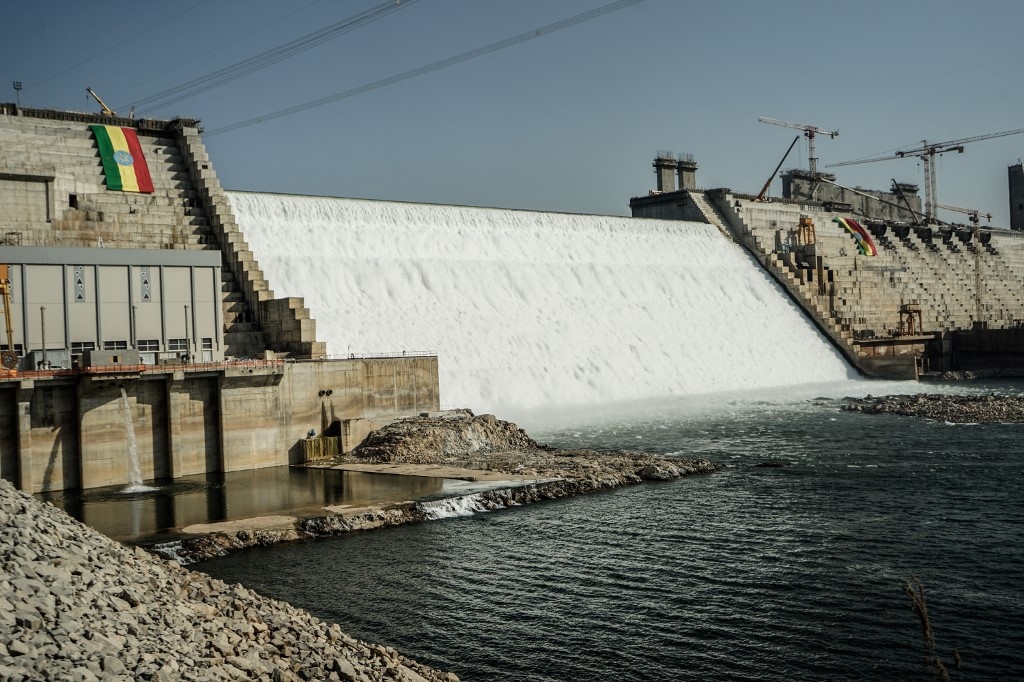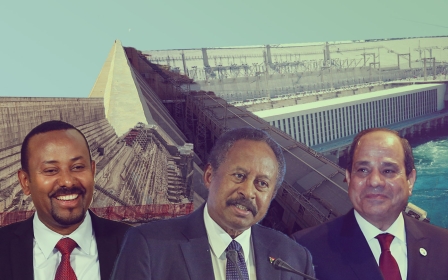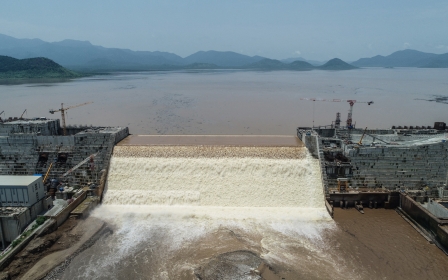Ethiopia says filling of Nile Renaissance dam complete

Ethiopia announced on Sunday it had filled its Grand Renaissance Dam on the Nile, which has been the source of a long-running water dispute with downstream Egypt and Sudan.
The announcement came just a fortnight after the three countries resumed negotiations, after a lengthy break, on an agreement which takes account of the water needs of all three.
Egypt and Sudan fear the massive $4.2bn dam will severely reduce the share of Nile water they receive and have repeatedly asked Addis Ababa to stop filling it until they have all reached agreement on how it should work.
On Sunday, Egypt's foreign ministry called Ethiopia's filling of the dam "illegal" and said that it "places a burden on the course of the resumed negotiations, the next round of which… is hoped will witness a tangible and real breakthrough".
Ethiopia's Prime Minister Abiy Ahmed said on X, formerly Twitter: "It is with great pleasure that I announce the successful completion of the fourth and final filling of the Renaissance Dam.
New MEE newsletter: Jerusalem Dispatch
Sign up to get the latest insights and analysis on Israel-Palestine, alongside Turkey Unpacked and other MEE newsletters
"There was a lot of challenge. We were many times dragged to go backwards. We had an internal challenge and external pressure. We've reached (this stage) by coping together with God," Abiy said.
"I believe that we will finish what we have planned next," he said.
The Ethiopian government’s communications service said on X that the dam, arguably the largest in Africa, was "a gift to generations”.
"Today's heroic generation will build tomorrow's strong Ethiopia on a solid foundation," it continued.
Existential threat
At full capacity, the huge hydroelectric dam - 1.8km long and 145m high - could generate more than 5,000 megawatts.
That would double Ethiopia’s production of electricity, to which only half the country’s population of 120 million currently has access.
The government of Sudan has not yet reacted to the announcement.
The dam has been at the centre of a regional dispute ever since Ethiopia broke ground on the project in 2011.
Negotiations between the three governments, which resumed in Cairo on 27 August after nearly two and a half years of stalemate, aim to reach an agreement that "takes into account the interests and concerns of the three countries", Egyptian Water Resources and Irrigation Minister Hani Sewilam said at the time.
He called for "an end to unilateral measures".
Egypt, which is already suffering from severe water scarcity, sees the dam as an existential threat because it relies on the Nile for 97 percent of its water needs.
The position of fragile Sudan, which is currently mired in a civil war, has fluctuated in recent years.
Ethiopia has said the dam, which is in the northwest of the country around 30km from the border with Sudan, will not reduce the volume of water flowing downstream.
The United Nations says Egypt could "run out of water by 2025" and parts of Sudan, where the Darfur conflict was essentially a war over access to water, are increasingly vulnerable to drought as a result of climate change.
Middle East Eye delivers independent and unrivalled coverage and analysis of the Middle East, North Africa and beyond. To learn more about republishing this content and the associated fees, please fill out this form. More about MEE can be found here.




